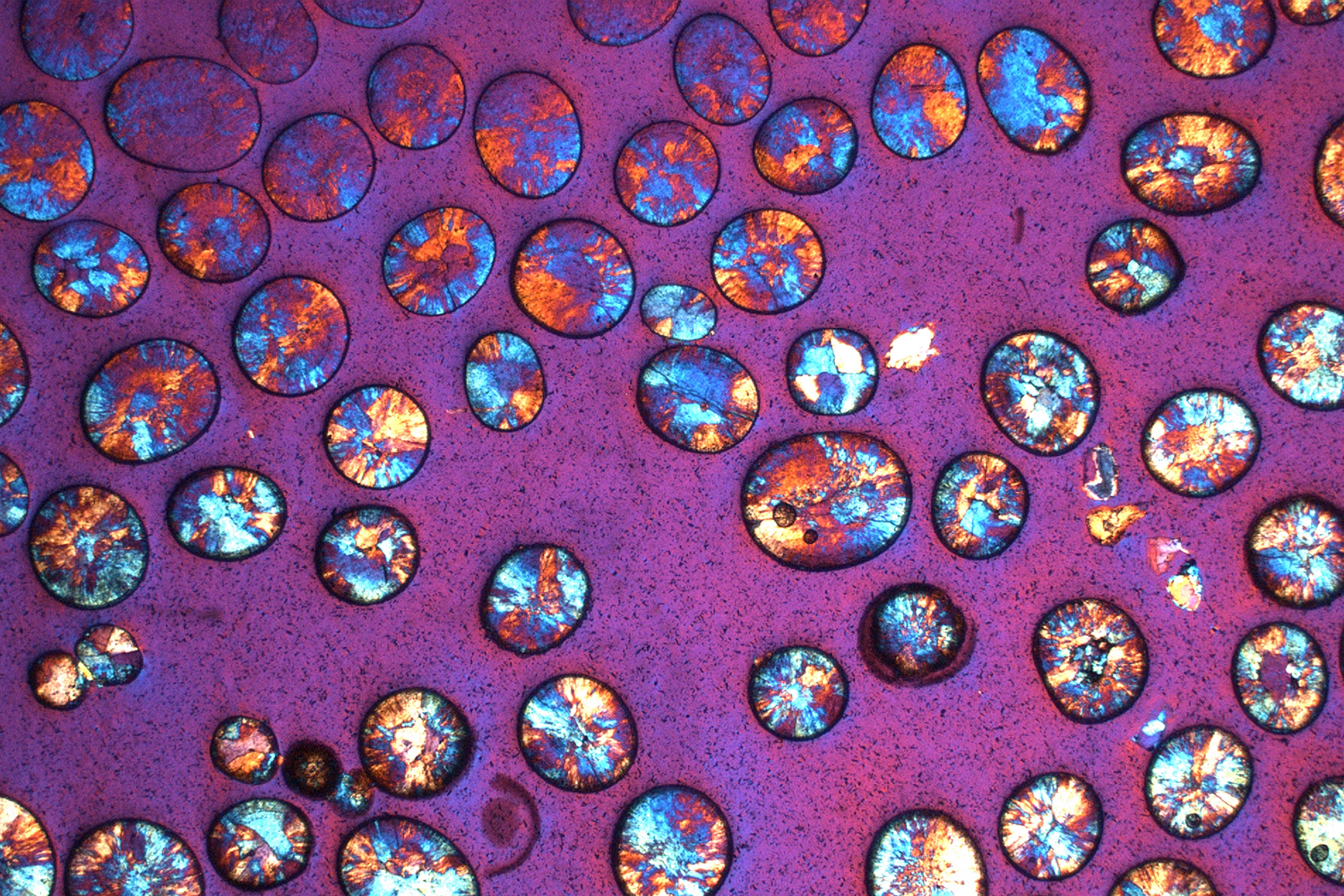Picture of the Month: From wastewater to sustainable fertiliser Research project boosts phosphorus recovery from sewage sludge
Under a microscope, they look like colourful pearls glistening in the light. But they are actually small white beads that farmers can use as a mineral fertiliser on their fields. The crystalline phosphorus product struvite is precipitated from nutrient-rich water or material streams in wastewater treatment plants. As phosphorus is a finite and vital resource, P-recycling from sewage sludge is becoming increasingly important. It is also important to close the phosphorus cycle in the sense of a circular economy. This is possible with struvite, as shown by the P-Net project funded by the German Federal Ministry of Education and Research. In the phosphorus recycling project, led by the Institute of Sanitary and Environmental Engineering at Technische Universität Braunschweig, the PECO process developed in the project has now been tested for the first time on an industrial scale in a wastewater treatment plant.

A thin section of struvite spheres under the polarisation microscope. Picture credits: Andreas Kolb/TU Braunschweig
The phosphorus product struvite – actually magnesium ammonium phosphate – is produced by precipitation or crystallisation. The crystals are known for their ‘coffin lid’ shape, but can also take on other shapes under certain precipitation conditions, as shown in the picture of the month. Using a polarisation microscope, a special light microscope, scientists led by Professor Thomas Dockhorn at the Institute of Sanitary and Environmental Engineering have examined a thin section preparation of struvite spheres (ooids). The resulting interference or polarisation colours can be seen. These colours are generally not pure spectral colours, but mixed colours. The method is used to analyse crystals using crystal optics and for structural analysis and mineral identification. The study helps researchers to better understand crystal growth and the underlying mechanisms.
Fertiliser for organic farming
The struvite produced at the Braunschweig and Gifhorn wastewater treatment plants is free of harmful substances such as heavy metals or pharmaceutical residues and can be applied directly to the root zone of plants as a depot fertiliser. The phosphorus product has also been approved as a fertiliser for organic farming in accordance with the EU Organic Regulation since January 2023 and has already been approved by the first associations.
The aim of the P-Net project is to upgrade the Braunschweig and Gifhorn wastewater treatment plants for struvite precipitation and to establish a network for regional phosphorus recycling in the Harz and Heide regions. An amendment to the German Sewage Sludge Ordinance will require sewage treatment plant operators to recover and recycle phosphorus from sewage sludge or sewage sludge incineration ash by 2029 at the latest. At present, between five and 30 per cent of the phosphorus can be recovered from sewage sludge by precipitation. The phosphorus content in the dry matter of the sewage sludge is usually between three and four percent in both treatment plants. From 2029, a legal limit of less than two percent will apply. The project partners therefore want to improve the struvite precipitation process to such an extent that it will also meet the future requirements of the Sewage Sludge Ordinance in an economical operating mode.
